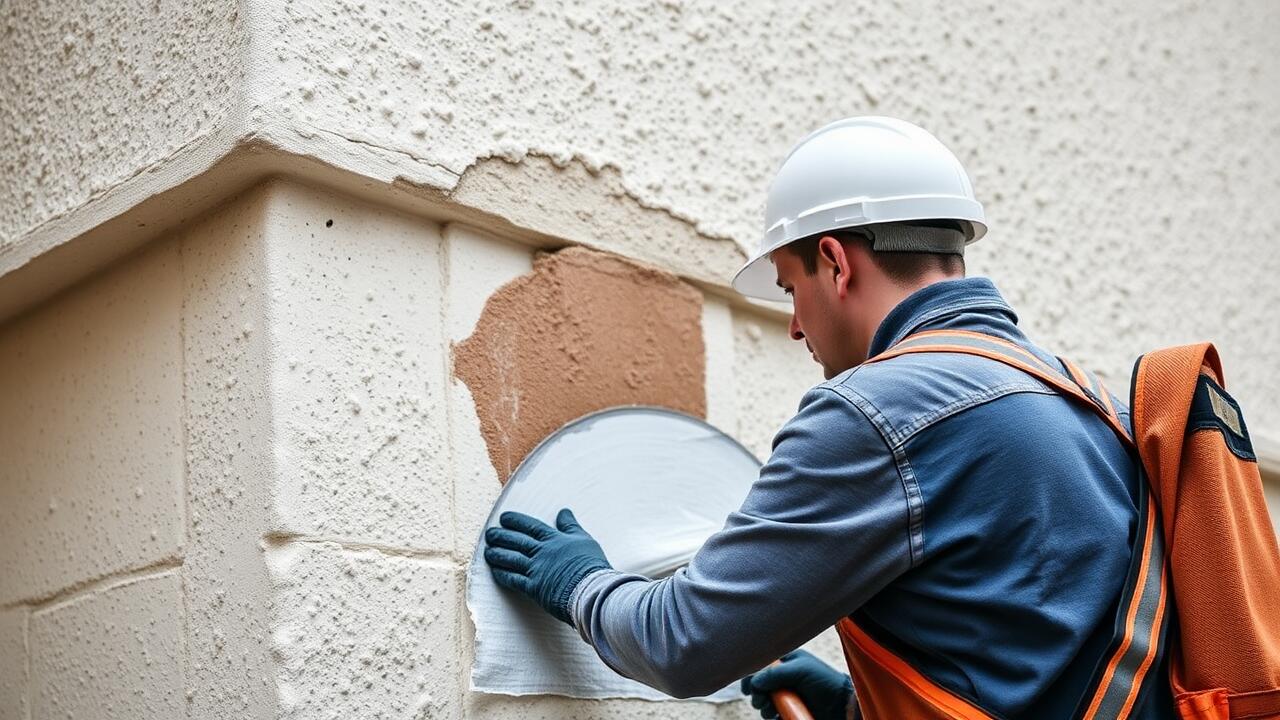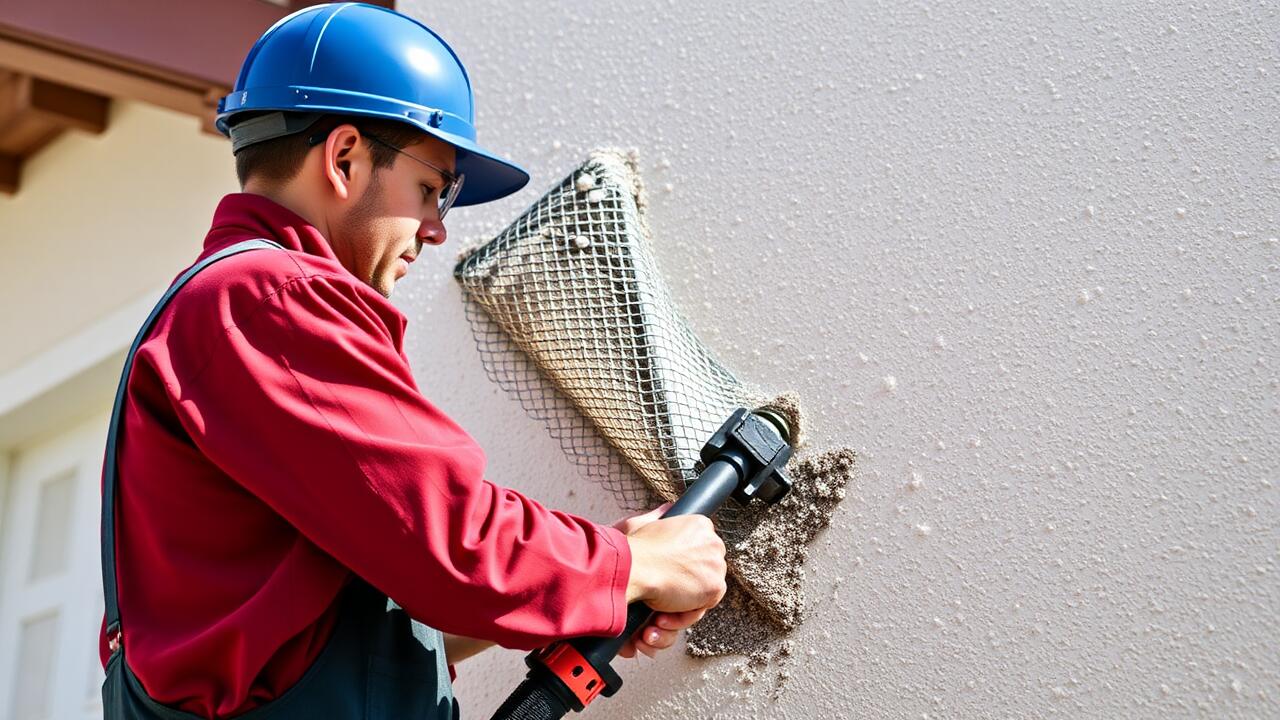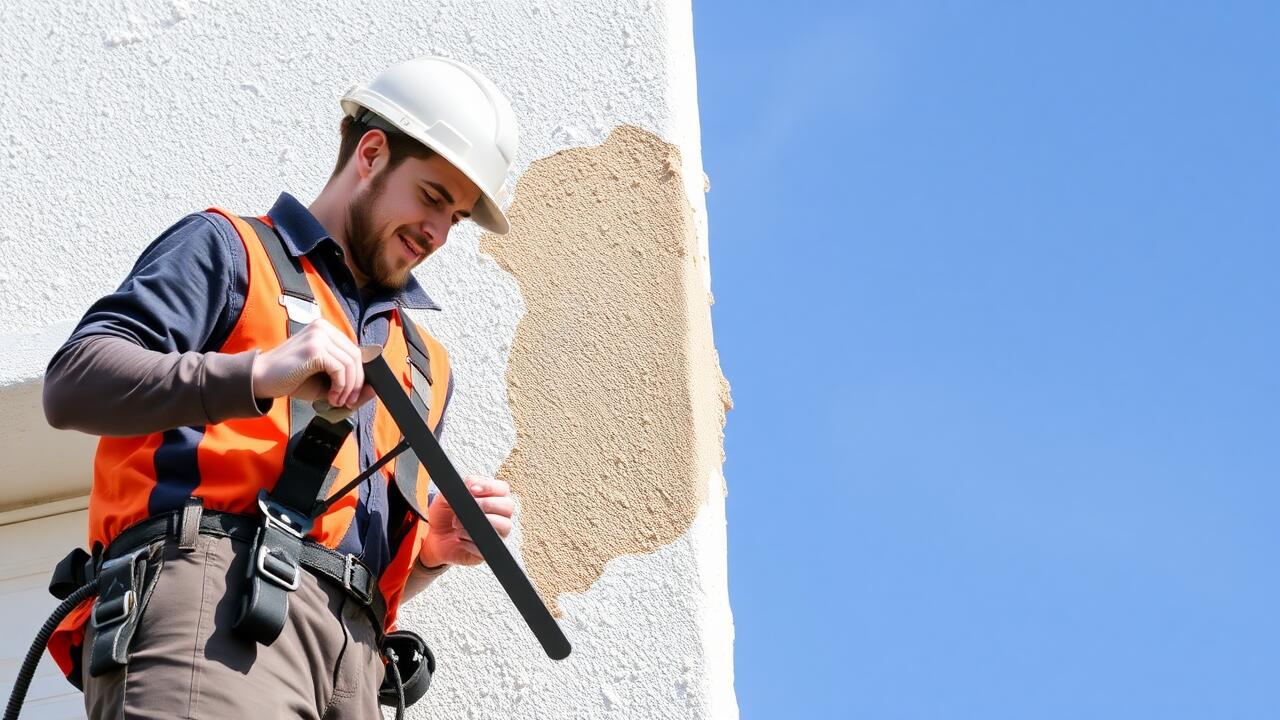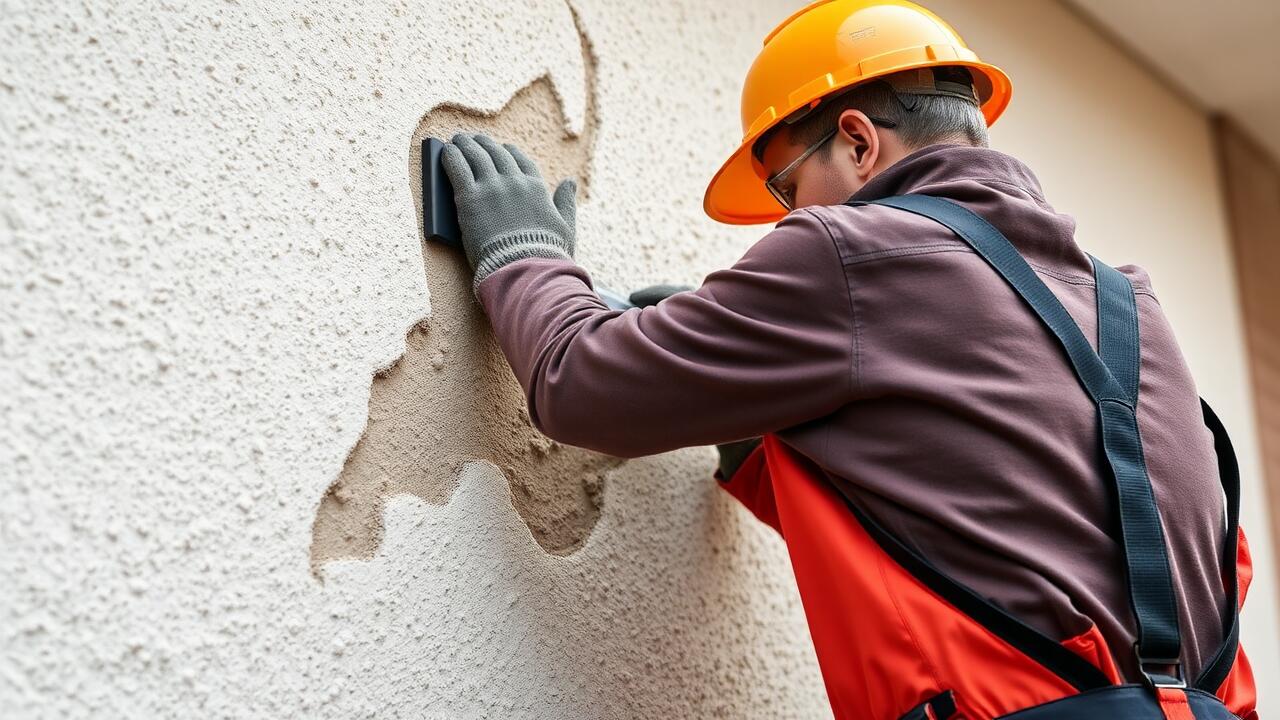
Repairing Damaged Stucco
Damaged stucco can lead to more significant issues if not addressed promptly. The repair process typically starts with identifying and assessing the extent of the damage. Common signs include cracks, peeling, or flaking, which can allow moisture infiltration. Once the damage is evaluated, the next step is to remove any loose or deteriorating sections to ensure a solid foundation for repairs. Homeowners should consider searching for "Stucco Repair near me" to find qualified professionals who can carry out the restoration effectively.
After the damaged areas are cleared, it is essential to prepare the surface properly. This may involve applying a bonding agent to help new stucco adhere. Mixing the right stucco patching compound is crucial for color and texture consistency. Once applied, it's vital to let the repair cure adequately to prevent future issues. Regular inspection and maintenance of the stucco can help catch potential problems before they escalate, ensuring your exterior remains in good condition.
Steps for Effective Restoration
Restoring damaged stucco requires careful attention to detail. Begin by determining the extent of the damage, as this will dictate the necessary repairs. Small cracks may need patching, while larger areas may require complete replacement. Clean the affected area thoroughly, removing debris and any loose stucco. This step ensures that the repair materials adhere properly. Once the surface is prepared, apply a bonding agent to enhance the adhesion of the new stucco.
After the initial preparation, mix the new stucco according to the manufacturer's instructions. Apply the mixture evenly, ensuring that it blends seamlessly with the existing surface. For those unsure about their skills, it may be beneficial to search for "Stucco Repair near me" to find qualified professionals who can handle the restoration efficiently. Allow the new stucco to cure according to the recommended time frame, keeping the area damp to promote proper drying. Regular monitoring after the repair can help in identifying any signs of moisture or mold growth in the future.
Chemical Treatments for Prevention
Chemical treatments can play a significant role in preventing mildew and mold growth on stucco surfaces. Various commercial products are available that specifically target fungal growth and act as barrier agents to protect the stucco. These treatments often contain fungicides or mildewcides, providing a protective layer that prevents moisture-related problems. Proper application is essential, as uneven coverage may lead to areas where mold can thrive, mitigating the effectiveness of the treatment.
Homeowners should consult with professionals when considering chemical options, especially if they are unsure about which products to use. Researching "Stucco Repair near me" can lead to local experts who can recommend safe and effective treatments tailored for specific conditions. Regular maintenance, including reapplication of these chemical treatments as needed, helps in keeping stucco surfaces clean and free from mold.
Safe and Effective Products to Use
When choosing chemical treatments for preventing mildew and mold growth on stucco, it’s crucial to select products specifically designed for masonry surfaces. These cleaners often contain specialized formulas that penetrate the porous structure of stucco and eliminate mold spores effectively. Look for options that include antifungal agents or biocides, which can provide long-lasting protection against the recurrence of growth. Always follow the manufacturer's instructions to ensure safe and effective application, particularly in outdoor environments.
When considering restoration services, local searches such as "Stucco Repair near me" can lead to professionals who understand the specific needs of stucco maintenance. Many contractors utilize eco-friendly products that are both safe for the environment and effective in mold prevention. Selecting the right service not only addresses current issues but also helps in implementing preventative measures that can prolong the life of your stucco surfaces. These options may include sealants that act as barriers against moisture while promoting better airflow.
Importance of Proper Drainage
Proper drainage is crucial in the maintenance of stucco surfaces, as it helps to prevent the accumulation of moisture that can lead to mold and mildew growth. Water that pools against stucco walls can infiltrate the material, compromising its integrity and making it more susceptible to damage. Ensuring that gutters, downspouts, and drainage systems are functioning correctly can significantly reduce the risk of moisture-related issues. Regular inspections and maintenance of these systems are essential for long-term protection.
The impact of inadequate drainage goes beyond just the exterior appearance of a home. It creates the perfect environment for mold growth, which can pose health risks to residents. Homeowners should consider seeking services that specialize in "Stucco Repair near me" to address any existing damage and implement preventive measures. Effective drainage not only protects the stucco itself but also safeguards the overall health of the living environment.
How Drainage Affects Mold Growth
Proper drainage plays a crucial role in preventing mold growth on stucco surfaces. When water accumulates around stucco walls, it creates an environment conducive to mold and mildew development. Moisture can penetrate cracks and crevices, worsening the problem over time. Ensuring that gutters and downspouts direct water away from the building can significantly decrease the likelihood of mold issues. Homeowners should regularly inspect these areas for clogs or damage that could lead to water build-up.
In addition to managing exterior water flow, landscape grading can impact drainage. A well-designed grading directs rainwater away from the foundation. This practice helps maintain dry stucco surfaces and reduces humidity levels around the walls. If mold growth does occur, professional services specializing in stucco repair can help restore the integrity of the material. Searching for "Stucco Repair near me" can connect homeowners with experts equipped to address both repair and prevention effectively.
FAQS
What are the common signs of mildew and mold growth on stucco?
Common signs include discoloration, a musty smell, peeling paint, and a damp or wet appearance on the stucco surface.
How can I prevent mildew and mold from growing on my stucco?
Prevention can be achieved through regular cleaning, ensuring proper drainage, applying chemical treatments, and maintaining adequate ventilation around the stucco.
What should I do if I find mold on my stucco?
If you find mold, it’s important to remove it immediately using safe cleaning solutions, repair any underlying damage, and take preventive measures to stop future growth.
Are there specific chemical treatments recommended for stucco to combat mold?
Yes, there are various commercial mold removers and fungicides specifically designed for stucco that are safe and effective. It’s best to choose products that are mildew-resistant and environmentally friendly.
How does improper drainage contribute to mold growth on stucco?
Improper drainage can lead to water pooling around the stucco, creating a damp environment that promotes mold and mildew growth. Ensuring proper drainage helps keep the stucco dry and reduces the risk of mold development.



